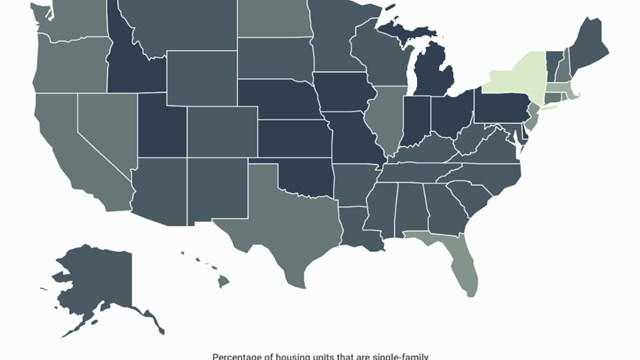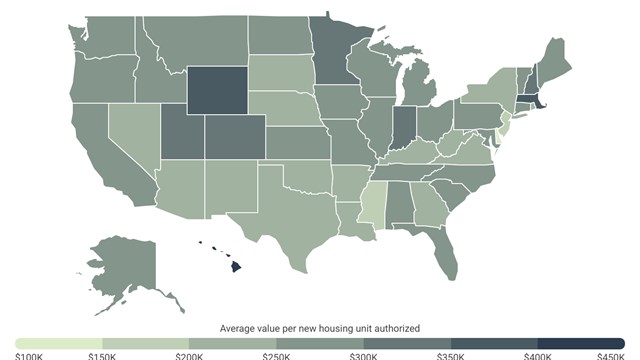By now, the New York City real estate market has become nearly legendary. Always one of the top three costliest American cities in which to live, the Big Apple also gives Tokyo, London, and other notoriously expensive cities a run for their money as far as rents and apartment purchase prices are concerned.
By all accounts, 2005 did nothing to alter the city’s high-ticket status. Despite rumors of a real estate “bubble” fueled in part by media and investor speculation, the co-op and condo real estate market in New York continued to grow strongly in 2005, although a slight slowing down was reported in the last two quarters.
According to data compiled on Yale Robbins Inc.’s Condo-Sales.com website, prices throughout 2005 were relatively steady — only declining toward the end of the year — and were even more robust than 2004. Between January and December 2005, a total of 6,766 one-, two-, and three-bedroom apartments were sold in the city, an increase of 2,488 over last year.
Of those 6,766 apartments sold, 1,038 were studios, 2,306 were one-bedrooms, 1,916 were two-bedrooms, 654 had three bedrooms, and 852 had four or more bedrooms or were classified as lofts. Sales peaked in March 2005 with 773 apartments changing hands, and were at their lowest ebb in November, with just 388 units sold. On average, about 560 apartments were purchased in any given month in 2005.
According to Jonathan Miller, president and chief executive officer of Miller Samuel, a real estate appraisal and consulting firm, “Two-bedrooms have the largest market share, and they nearly always have — but we have been seeing a lot of studios and one-bedrooms move, as well as $20 million-plus trophy properties.”
In a Nutshell
According to The Corcoran Group’s year-end report, the average selling price for Manhattan co-ops rose 23 percent, with condos seeing a 25 percent gain. Brooklyn saw across-the board increases in sales prices as well, although with a more modest 14 percent in co-ops and 10 percent in condos.
According to Warburg Realty Partners’ annual report, “In the past few years, small apartments have driven the market to its highest-ever price per square-foot, which was achieved in the third quarter.”
Miller agrees. “On a square-foot difference, condos sold for 24.8 percent more than co-ops did in 2005. This is partially due to the fact that the condos that sold were larger — 1,169 square feet for co-ops versus 1,362 square feet for condos — and larger space generally commands a premium on a per-square-foot basis. Based on other research, we generally see about a 15 percent premium for condos over co-ops that’s based on ownership rights. There’s just more freedom with condos.”
Moreover, the overall upward movement, is a reflection of a long-time trend, according to statistics compiled by the Real Estate Board of New York (REBNY). From the first quarter of 2002 to the third quarter of ‘05, median sales prices in Manhattan have risen from $493,500 to $650,000. For co-ops, that increased from $525,000 to $813,750.
According to industry observers, external political factors like the war in Iraq had very little impact on the real estate market. The economy, though, seems to be more on people’s minds.
“I think overall, the economy has been growing over the past year,” says Frederick Peters, president of Warburg Realty Partners. “Nationally, it was a little stronger than expected. I think that interest rates remained low for mortgages, even though the prime rate has been going up. Both of those factors have helped our market.”
As for whether there’s a limit to how much people can or will pay for property in New York City, Miller says “It’s not really a function of limit — when prices overreach incomes, prices will fall back, or the rate of appreciation will ease. In the latter half of 2005, the number of transactions fell, suggesting that appreciation will be much more modest in 2006.”
Bubble — or Hiccup?
One thing real estate professionals do not like is the word “bubble,” implying that the market is about to burst sooner or later, like the stock market did in the dot-com crash.
“We like to refer to that as the ‘B word,’” Peters says. “In the last eight months, our market has calmed down considerably, with not much in the way of price increases. I think that what happened is that the market needed to take a breather and catch up with itself. I think we’ll have a slower market, in which there will be more negotiation, but that all leads to a healthier marketplace.”
Chris Thomas, executive vice president of Brown Harris Stevens in Brooklyn, says, “The word `bubble’ applies better to the stock market sphere, where you’re clearly buying an investment product. In the co-op market that’s not the case.” While condos can present an opportunity to speculate, Thomas says, “The vast majority of condo purchases were made by people who actually want to live in the condo.”
Pam Liebman, president and chief executive officer of The Corcoran Group, agrees. “Real estate is real and tangible,” she says, “and for those who intend to live in their homes for five years or more, they’re not just buying for speculative purposes.”
“No, this is not a bubble,” says Roberta Benzilio, chief operating officer of Century 21 Kevin B. Brown and Associates. “This is only a market hiccup because of a seasonal adjustment, coupled with the uncertainty the public feels from all the talk of a bubble.”
Reality-Based Real Estate
Comparisons with the market of the late ‘90s or early ‘00s also come up favorably, with executives characterizing today’s real estate market as being more healthy and “reality-based.”
“The main difference,” says Peters, “is that in the 1990s, people perceived the real estate market as being completely linked to the stock market. After the bursting of the tech-stock bubble, the two markets uncoupled, and people began regarding real estate as a separate investment class.”
“In the 1990s,” says Kirk Henckels, director of private brokerage at Stribling Associates, “we had a speculative market. Now, the market is not dominated by investors who intend to flip.”
Joanne Kennedy, chief operating officer of Coldwell Banker Hunt Kennedy, expresses similar sentiments: “Today, the market is more level and the hysteria has calmed down. Buyers have more time to shop, more choices, and greater opportunities to negotiate. Every sale is not an automatic bidding war.”
Which were more popular last year — co-ops or condos? General sentiment was that most people, if given the choice, would rather buy a condo because of the often-harrowing co-op board approval process. But because so many of the most desirable buildings in Manhattan are co-ops, co-ops in prestigious areas such as the Upper West and Upper East Sides continue to be desirable.
The More the Better
So what are these co-op and condo buyers looking for? “If one is buying a new condo,” says Peters, “it’s baseline that buyers want a health club. Many of them have pools in the buildings, many have a sun deck.”
Still, he says, amenities aren’t what make people buy an apartment—it’s the essentials, like space, light, a sense of community. Furthermore, he says, some non-luxury buildings are offering “virtual doormen” in the form of surveillance and electronic concierge services instead of actual doormen, since these buyers don’t want “the enormously high carrying charges that go with round-the-clock service.”
By contrast, Benzilio says, “The more, the better. The more unique, the hipper or cooler it is — the latest in kitchen fashion, the newest designers, and top, top quality. Something no one else has — like a private dog run.”
Also, adds Kennedy, “State-of-the art kitchens and baths, no matter how big, are always at the top of the list. So is light, which translates to big windows and lots of glass.”
This rage for the latest amenities has even hit Brownstone Brooklyn, whose stately 19th century townhouses are being augmented by new construction — even though, according to Thomas, it’s easier to put features like saunas, hot tubs, Jacuzzis, gas-burning fireplaces and roof decks into new buildings than to retrofit them into older ones.
In — Or Near —Manhattan
Many of the emerging and still-hot new neighborhoods are still in Manhattan, such as Harlem, the Lower East Side and “Midtown West” (the old meat-packing district, Hell’s Kitchen, etc.).
Following a trend that has increased in the past 10 years, other fashionable, in-demand neighborhoods like Greenpoint, Red Hook, Long Island City, and Vinegar Hill, have continued to develop outside Manhattan. Often, commercial developments, such as the construction of long-awaited the Fairway supermarket and IKEA furniture store in Brooklyn’s Red Hook, will make the surrounding residential neighborhood more desirable.
Many of these “newer” neighborhoods are being populated with buyers priced out of Manhattan. “So many of the kids who grew up on the Upper East Side and went away to college, when they graduate and come back, they don’t move to the Upper East Side. They go to Park Slope and Carroll Gardens,” says Peters.
Still, one thing these now-fashionable neighborhoods in Brooklyn and Queens have in common is that they are within a half-hour or so of Midtown and Downtown Manhattan. Manhattan is still seen as the capital of the world, with its restaurants, theaters, Madison Square Garden, museums, and nightclubs.
“Manhattan is the financial, commercial, artistic and intellectual center of the world,” says Liebman, “and to be able to call it home is a dream shared by millions of people from around the globe.”
Few of those interviewed for this article see much cooling-off of interest in fashionable neighborhoods — especially in Manhattan — although Kennedy says the Sutton Place area between 53rd and 59th streets, has been “a relative bargain for a decade.”
In Brooklyn, Carroll Gardens has cooled off slightly, says Thomas, even though that neighborhood is still very desirable. It’s just that in the past, “Carroll Gardens’ selling point was its proximity to Cobble Hill,” and now, emerging nearby neighborhoods like Red Hook and Fort Greene “are competing for the next generation of buyers.”
New Construction Projects
Part of the benefit of the booming New York City market is that it is fueling a wealth of new construction and alterations of existing co-ops and condos throughout Manhattan and the surrounding boroughs. You can’t walk a block in the city without seeing a bulldozer, crane or scaffold dotting the concrete urban landscape we call the Big Apple.
These new condo buildings span a wide range, from a proposed nearly 900-unit development in Chelsea to mid-range projects calling for 200 to 300 units in Midtown and the Upper East and Upper West Sides, all the way down to The Nola, an eight-unit townhouse condominium set for occupancy later this year in Brooklyn. Three new co-ops are in the pipeline, the 475-unit Tower Residences at One Carnegie Hill being built by The Related Companies at 215 East 96th Street, a condop, a 17-story, 62-unit development at 4 West 21st Street, and 23 units at 2000 Fifth Avenue planned by The East Harlem Development Corporation. One condop will be going up along Park Avenue South, a 40-story, 432-unit building scheduled for completion in 2008. Across the river in Brooklyn, Thomas notes construction projects along State and Livingston Streets, the Smith at Smith Street and Atlantic Avenue, and the J Condo at 100 Jay St., which, at the time this article was being written, was “already half sold — even though it’s still just a hole in the ground.”
Celebrity broker Dolly Lenz of Prudential Douglas Elliman is less bullish than some and stresses that caution must be exercised in evaluating all the new construction activity. “With all this new construction coming on—they really aren’t builders—they don’t understand the risk, the construction risks, there’s so many risks. So I feel that all this new product coming on to the market with people who really didn’t know exactly what they were doing and that could hurt the market,” she warns.
“But if we’re talking about a great developer with experience, with a great construction company behind them and a great lender, there’s no issue. Look at the way Central Park West has been absorbed or Time Warner, it’s still the hottest thing going. And that says everything. But you really have to know what you’re doing. You couldn’t be last week in the schmatza business and this week in the construction business,” quips Lenz.
Developers Stephen Ross of The Related Companies and William Zeckendorf of Zeckendorf Development, however, both remain very optimistic. Although the market did shift and may continue to undergo a correction, New York City is still the greatest in the world in which to live, and people still want to be here, they said.
The Super-Luxury Market
Since so many of the newer buildings are intended for the super-luxury or ultra high-ticket markets, or advertise themselves as such, what does this mean?
Kennedy defines the super-luxury market as offering “studios and new one-bedrooms over $2 million. Fifteen Central Park West is at the top of the list.”
Henckels of Stribling raises the bar, defining the “super” luxury market as “generally $10 million, $15 million and up, a market that’s doing very well. There was an apartment that sold for $20 million that sold in a week two weeks ago.” What defines this market, he says, is “location, architecture and service.”
And what is inside these luxury and super-luxury apartments?
In Thomas’ opinion, a luxury co-op or condo building is one that has a doorman, probably a live-in super and a two-or three-person staff. “If this is new construction, there would be high-end finishes in bathrooms and kitchens, both a Jacuzzi tub and a separate shower/steam room, his-and-hers vanities, usually a dressing area in the master bedroom, a guest bathroom — and countertops would be either marble or granite.”
Not Necessarily Necessary
“What constitutes luxury — perceived or otherwise,” sums up Benzilio, “is top quality, excess, sumptuousness, and that which is not always essential.”
What trends are seen for 2006 in beyond for the co-op and condo market? Buyers will continue to seek more conveniences, extra space, internally-wired Internet and cable access, and, in some cases, hotel-like services.
With all this luxury in the air, it may be surprising to some that Kennedy points to more affordable housing in emerging neighborhoods as being a growing trend — especially in appreciating neighborhoods like Harlem. In other neighborhoods, like Greenpoint and Williamsburg in Brooklyn, a certain percentage of affordable units is mandated as part of a deal under which the city approves large new residential developments.
But in general, Kennedy says, “Manhattan is continuing to be an island for the well-heeled, and square footage and abundant closet space are at a premium.” And there’s very little new about that — though 2006 is shaping up to be a somewhat different story than 2005, at least in terms of the pace of the market. According to Miller, it may be easier to characterize 2006 by what it isn’t.
“I don’t’ think 2006 will be a market with tight inventory and rapid appreciation. Inventory levels have been expanding and higher mortgage rates — especially [adjustable rate mortgages] ARMs — will temper demand. New development will continue to enter the market, since many of these developers have been in the pipeline for two years or more. I think we’ll see much more marketing by brokers as they make the transition from order-takers to real marketers in order to differentiate their product from others.”
Raanan Geberer is a freelance writer living in New York City.






Leave a Comment